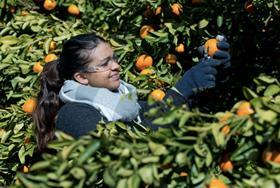
Australian citizens continue to dominate the country’s agriculture workforce, with overseas workers more common on horticultural farms.
These findings were outlined in a recent survey conducted by the Australian Bureau of Agricultural and Resource Economics (ABARES), which involved 2,400 farms covering broadacre, dairy, vegetable and some irrigation industries.
“Family and other Australian workers make up the majority of the agricultural workforce,” ABARES’ acting executive director Peter Gooday said.
“The dependence on workers living nearby highlights the importance of a pool of local workers to agricultural industries and may reflect limited mobility in the Australian agricultural workforce.”
The results of the report, Demand for farm workers: ABARES farm survey 2018, indicated horticultural farms made the most use of workers on a visa to help meet seasonal needs.
Most of these visa holders were backpackers on working holiday maker visas, with relatively few farms accessing workers through Australia’s Seasonal Worker Programme.
Farmers surveyed were generally able to fill any vacancies, and recruitment difficulties were similar or less common than businesses across the rest of the economy.
Gooday said farms in remote areas of the country and vegetable farms near cities had more difficultly recruiting workers.
“They may face greater competition for workers and they can’t offer work qualifying backpackers for a visa extension,” Gooday explained.
“Overall, farms had more difficulty recruiting higher skilled positions. This issue is not unique to agriculture and highlights the importance of access to agricultural training and the need to offer competitive wages and conditions.”



